Lew the Jew’s Tattoos
Devoted acolyte and fellow tattooer Don Ed Hardy talks about his rare collection of Lew the Jew memorabilia, on view at the Contemporary Jewish Museum in San Francisco
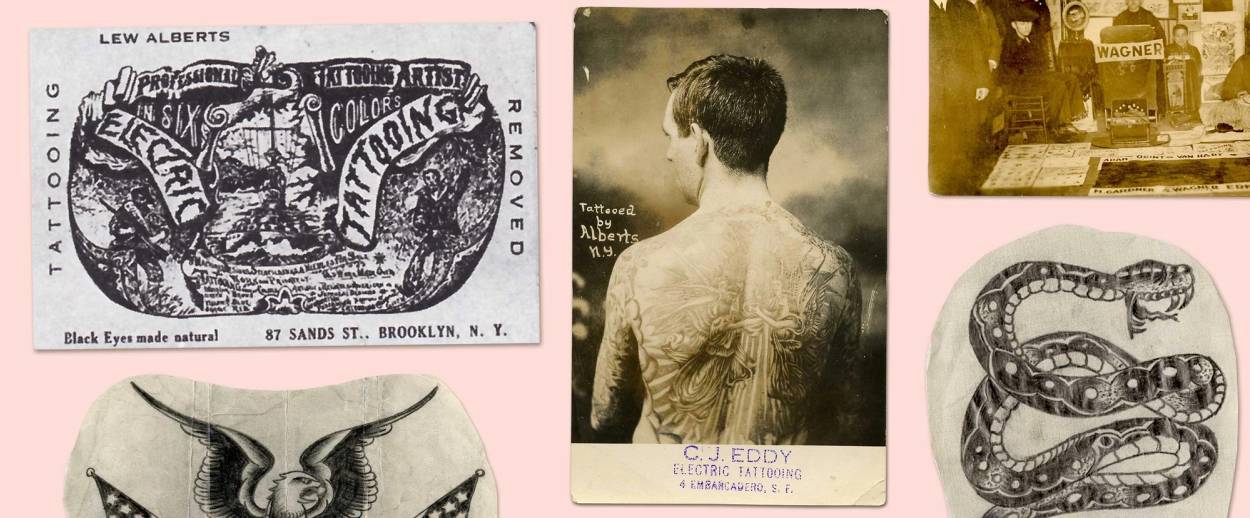
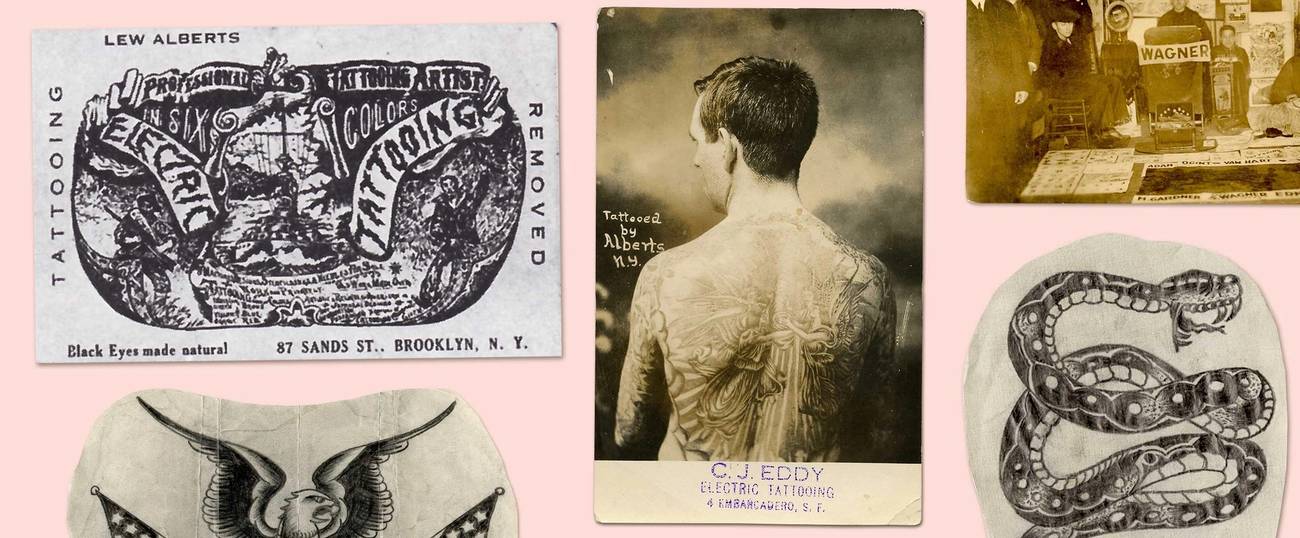


We often think of visual art—particularly, the sort of art one sees in museums—as extrinsic to ourselves. Whether painted on canvas or a ceramic surface, wood or metal, art comes to us as a static object, meant to be observed and contemplated from some distance. The notion that art can be a part of one’s own body, moving along with our skin and muscle, peeking from under a sleeve or a shirt flap seems foreign to the very notion we have of visual art. And that is only one of many reasons why tattoos aren’t often thought of as an art form, but at best a permanent, semiprivate accessory.
Yet the question of tattoo artistry—its aesthetic, spiritual, and historical power—is at the heart of the exhibit Lew the Jew and His Circle: The Origins of American Tattoo, now showing at the Contemporary Jewish Museum in San Francisco.
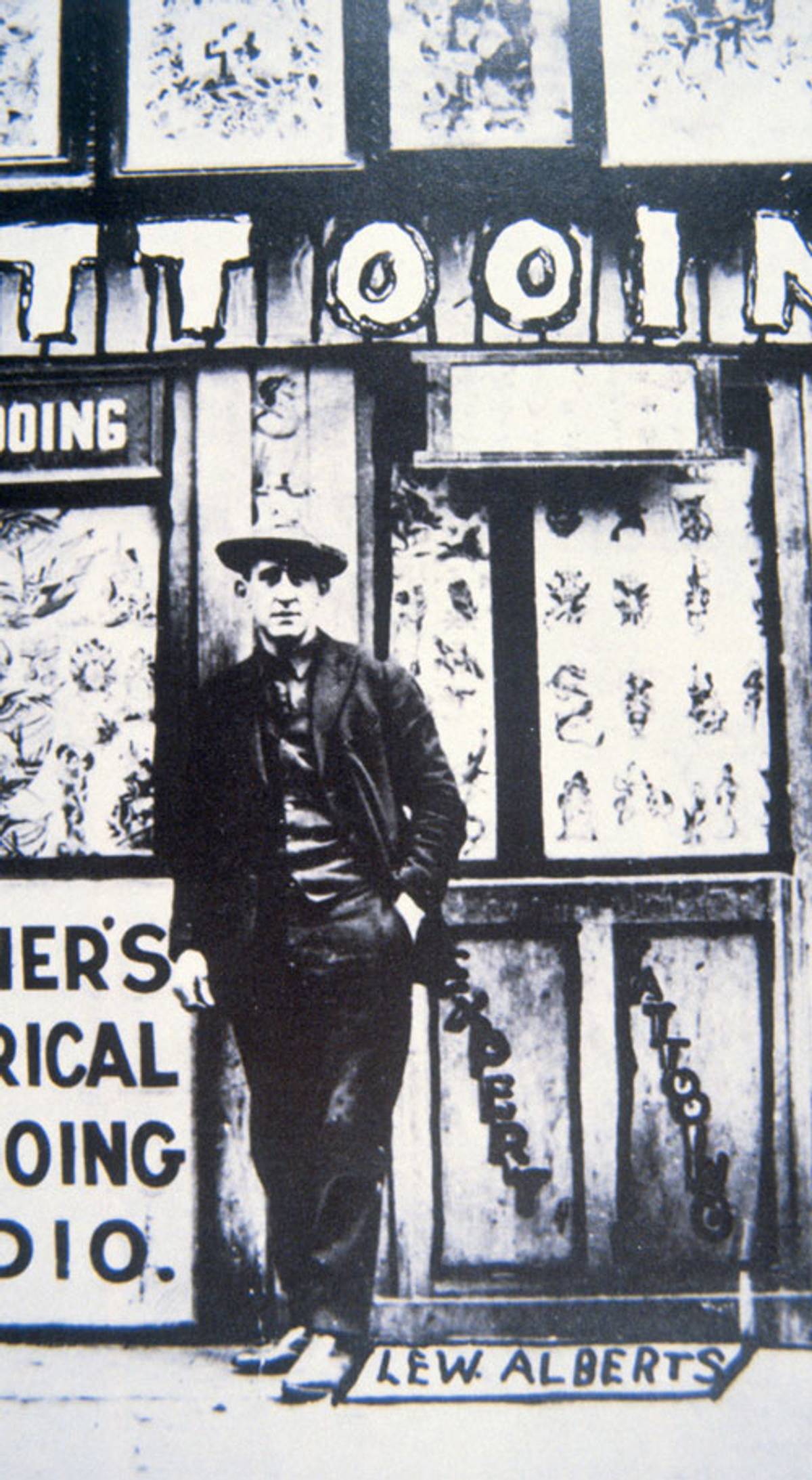
The exhibit tells the reconstructed story of Albert Morton Kurzman, aka “Lew the Jew” Alberts, a profoundly influential figure in the world of American tattooing. Born in New York in 1880 and active in the first half of the 20th century, Lew created a series of iconic all-American designs, which were later replicated by numerous other tattooers all across the country. Having learned the art of tattooing while stationed in the Philippines during his army service in the Spanish-American War, Alberts crafted and patterned an electrical machine, which sped up and thus radically transformed the technique of tattooing. While somewhat updated, the basic design is still in use in numerous shops. Alberts studied wallpaper design and engineering at the Hebrew Technical Institute, a Lower East Side vocational school for impoverished Jewish immigrant youths, and so was able to combine his technical and artistic knowledge to create his device. Given traditional Judaism’s aversion to body art, there is more than a measure of cosmic irony in the fact that a groundbreaking tattoo machine was invented by a graduate of a Jewish vocational school. This irony is perhaps mixed with some chutzpah, too, given that Alberts wore his identity on his sleeve, incorporating it into a catchy, somewhat brash moniker: Lew the Jew.
For a number of decades following a hepatitis B scare, up until 1997, tattooing was illegal in New York City. For centuries, in the United States and Europe it was associated with the underworld and all things exotic and forbidden—the result, likely, of Leviticus 19:28: “You shall not make any cuttings in your flesh for the dead, nor print any marks upon you.” Perhaps for that reason, not a whole lot had been known about Alberts. After all, the underworld’s accoutrements don’t get preserved in the cushy university archives—they’re disposed of by the police. And as far as underground characters go, no matter how notorious or productive, their stories get passed down in oral histories rather than through well-documented academic records.
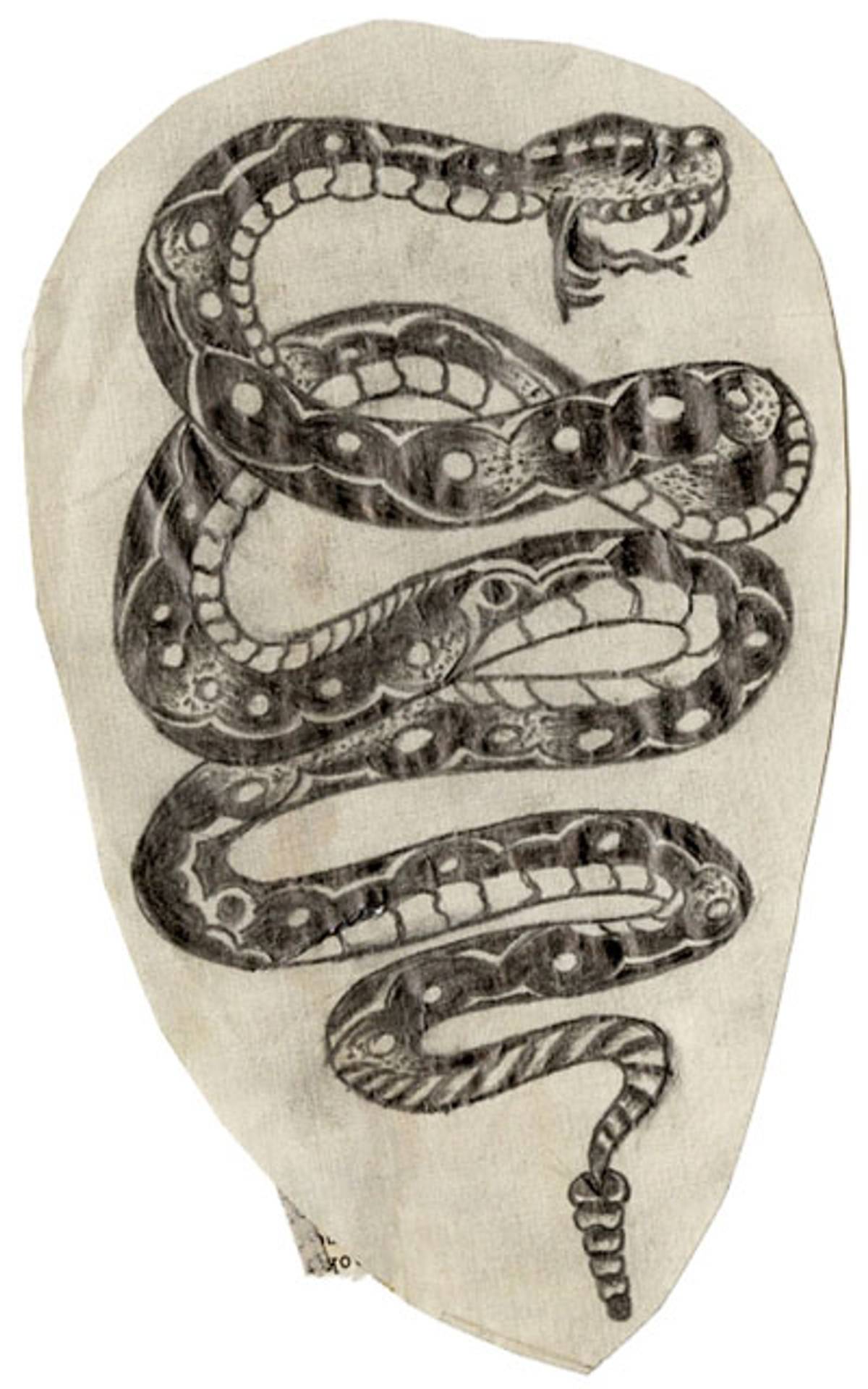
The story of Alberts received mainstream attention in 2015, when Don Ed Hardy, a legendary contemporary tattoo artist and designer, edited and published Lew the Jew Alberts: Early 20th Century Tattoo Drawings, a book that served as the inspiration for the current exhibit. Most of the items on display at the Contemporary Jewish Museum came from Hardy, as well.
When Hardy and I met at the exhibit, the artist recounted how thrilled he was when he acquired an archive that contained Albert’s belongings: “I knew about Lew from when I first decided to become a professional tattooer in the mid-1960s. There had been a book published—the only book published in English—about tattooing in America. It was done in the 1930s and they talked about him in there. So I knew who he was.”
As we walked, looking at the walls lined with sketches, correspondence, and photographs, Lew’s world presented itself to us. A hundred years ago, Hardy explained, when a customer would walk into a shop, he or she would be presented with a menu-like set of designs to choose from. Alberts authored various new “flash” drawings—the items others would put on their menu. Some of these originated in Japanese mythology, and many were new, catering specifically to American sensibilities: the flag, the bald eagle, and numerous exaggerated cartoon characters. The exhibited correspondence indicates extensive ties Alberts developed with tattooers on the West Coast, with whom he swapped designs and techniques. It was clearly a tightly knit, secretive community, as Hardy told me: “By the mid-20th century there were maybe 500 tattooers in the whole U.S. And now there are 5,000 in L.A. It’s blown up beyond what any of us ever dreamed of.”
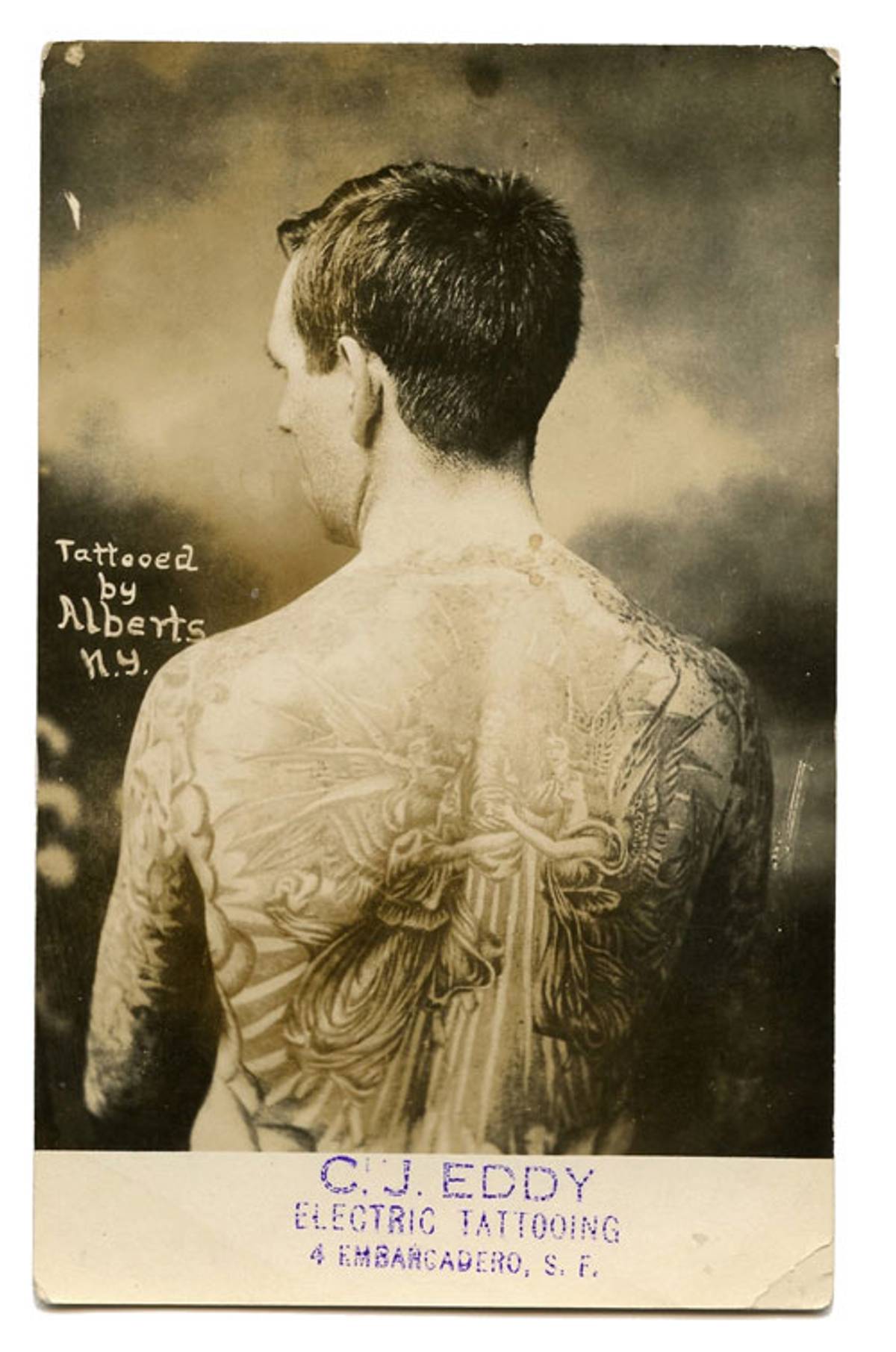
Reflecting on the history of tattooing, Hardy mused: “It’s been seen as an art in a lot of societies going back further than we know. Egyptian mummies had tattoos. I think it’s the oldest form of pictorial expression, probably from before people were painting on caves. In the West, only about 50 years ago it came to be explored as an expressive medium.” And most certainly, it had not been seen as an art form. Hardy himself, however, attended San Francisco Art Institute as a print major. Instead of going to Yale, where he was offered a graduate-school fellowship, he sought out Samuel Steward, aka Phil Sparrow—a writer and tattoo artist, who, for many years was a member of Gertrude Stein’s and Alice Toklas’ circle. Walking into Steward’s shop was a turning point: “It was set up as an art gallery.”
As society started to change, the clientele and its attitude toward tattooing started to shift, as well. “A lot of tattoos, I think, are amuletic for people,” said Hardy, “whether they’re acknowledged or intended as such, but it’s like psychic armor. … Like, this tiger is going to protect me.” The tattooed body is, in a way, a space where myth is no longer an abstraction that resides in one’s mind, but is enacted, daily, in the script of one’s bodily movements. Would it be a stretch to say that for Alberts, an immigrant from the Lower East Side, tattooing objects of American symbolism was somehow amuletic, as well? That it signified a desire for allegiance and belonging, protection, and hope?
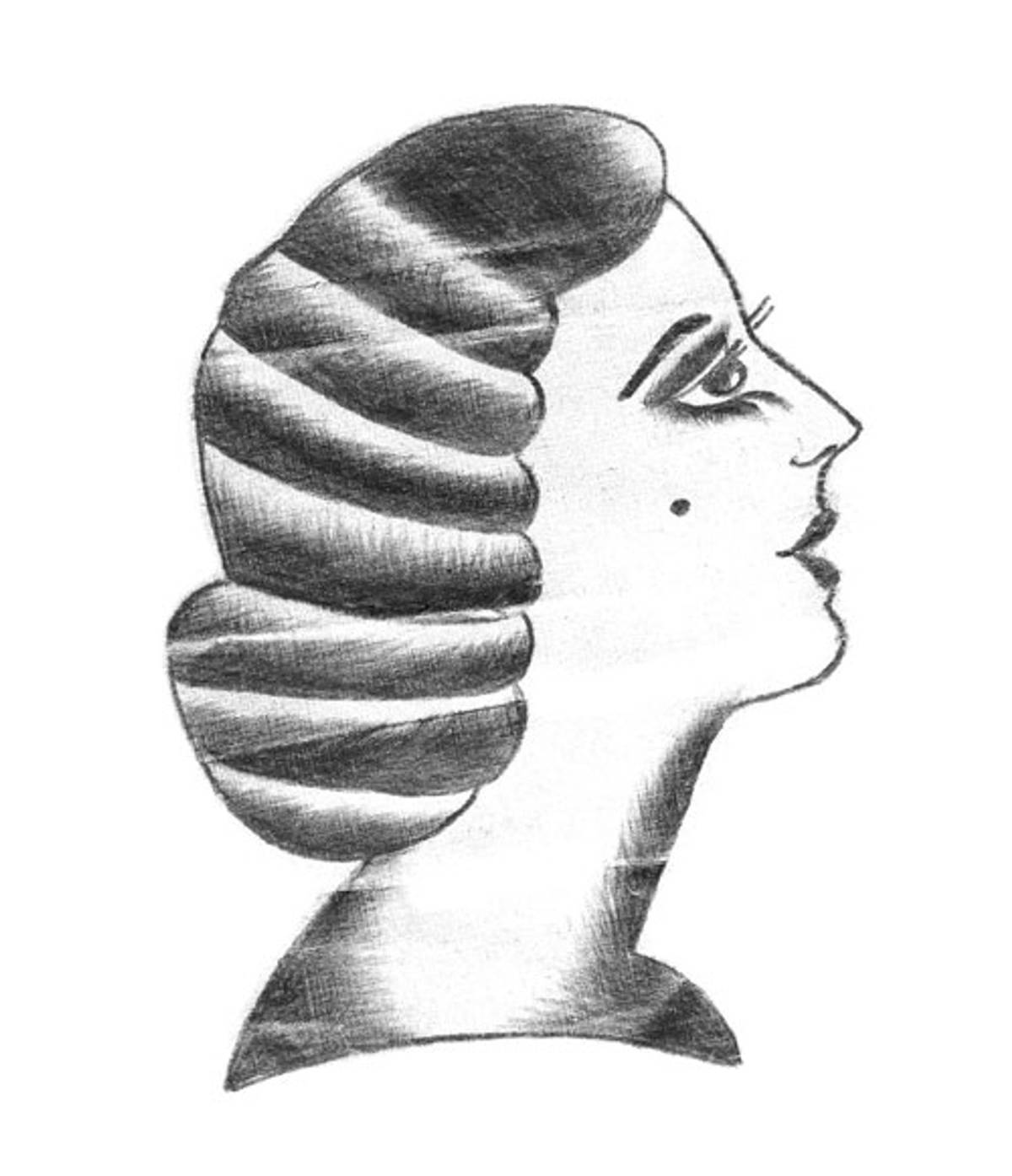
Mythology and philosophy are important dimensions of body art for a number of contemporary tattooers. One of them is Jill Bonny, a New York-born Jewish artist, whose shop Studio Kazoku is nestled a few blocks away from the main drag of the Haight neighborhood of San Francisco. Like Don Ed Hardy, Bonny is an artist with academic credentials: She graduated from a prestigious program at Cooper Union and considers her time in apprenticeship in Japan to be central to her aesthetics. While in Japan, she understood that in order to be successful, a tattooer needs to be both a craftsman and an artist. And that, she pointed out, is precisely what she found most exciting about the Lew the Jew exhibit: the artistic aspiration and meticulous craft, given expression in a genre, considered lowbrow within the society that engendered it. Equally fascinating to Bonny was the exhibit’s focus on the history of images and craft secrets that were passed down from one master to another, and are in use, still, by various people in her community.
Bonny connected to Alberts’ identity as well, even though Jewishness “wasn’t part of his visual vocabulary, wasn’t part of the identity of what he was painting and tattooing. But,” she added, “I don’t think identity has to be that simple. I’m interested in feeling connected to him because he took his education so seriously and applied it to his craft.”
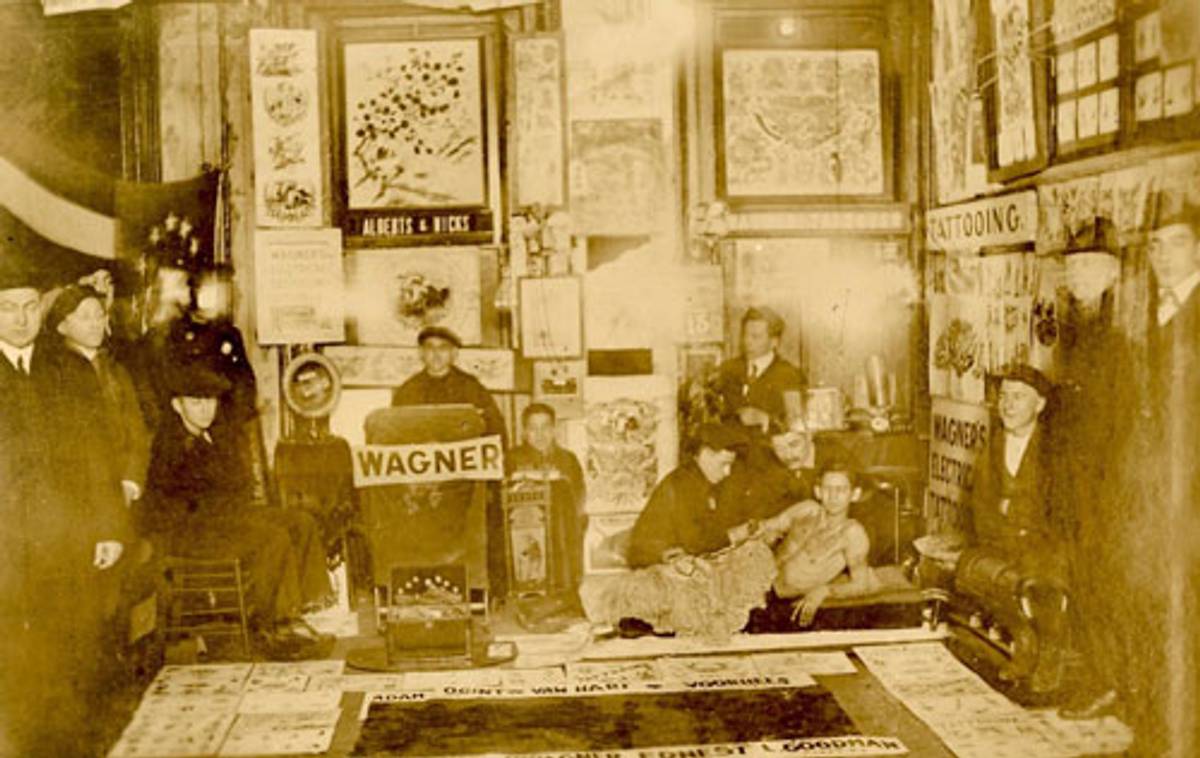
For Bonny, a granddaughter of Holocaust survivors, Jewish tattooing is a fraught subject, and one she thought about a great deal. Some Jews associate tattoos with concentration camp numbers, she acknowledged. In her perspective, however, “the application of those tattoos was impersonal, thoughtless, inartistic, and it is hard for me to look at it, and use the word ‘tattoo’ because of how much that word means to me. When I see those types of marks on someone, to me that relates more to branding an animal. It is not a chosen identity. That’s not my identity as a tattooed Jew. My identity is someone looking for superior art.”
Reflecting on the fact that some second-generation Holocaust survivors are choosing to tattoo their grandparents’ numbers on them, Bonny said: “Tattoo is a very tangible way of dealing with deep emotions.” Her own father, she told me, a child of Holocaust survivors, carries tattoos of his parents’ numbers as well as barbed wire. “People love getting family stories tattooed on them,” she added.
Much like Bonny, “Lew the Jew” Alberts was likely also looking for real art. Given his socio-economic milieu, high art was not in the cards for him. As he carved out his own niche, however, Alberts contributed to an authentic American folk-art tradition, and its secretive, underground American mythology, which continues to thrive, and carry his legacy.
***
You can help support Tablet’s unique brand of Jewish journalism. Click here to donate today.
Jake Marmer is Tablet’s poetry critic. He is the author of Cosmic Diaspora (2020), The Neighbor Out of Sound (2018) and Jazz Talmud (2012). He has also released two jazz-klezmer-poetry records: Purple Tentacles of Thought and Desire (2020, with Cosmic Diaspora Trio), and Hermeneutic Stomp (2013).